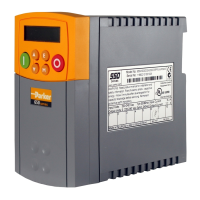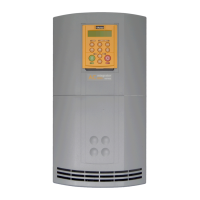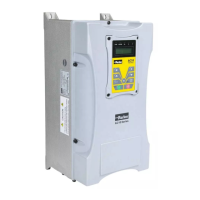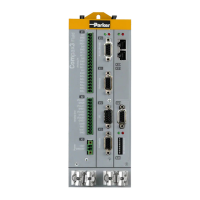9-26 Function Parameters
AC10 Inverter
For example: when F400=1, F402=8, if analog input voltage is lower than 1V, system judges it
as 0. If input voltage is higher than 8V, system judges it as 10V (suppose analog channel
selects 0-10V). If Max frequency F111 is set to 50Hz, the output frequency corresponding to 1-
8V is 0-50Hz.
The filtering time constant is set by F405.
The greater the filtering time constant is, the more stable for the analog testing. However, the
precision may decrease to a certain extent. It may require appropriate adjustment according to
actual application.
Channel proportional gain is set by F404.
If 1V corresponds to 10Hz and F404=2, then 1V will correspond to 20Hz.
Corresponding setting for upper / lower limit of analog input are set by F401 and F403.
If Max frequency F111 is 50Hz, analog input voltage 0-10V can correspond to output frequency
from -50Hz to 50Hz by setting these group function codes. Please set F401=0 and F403=2,
then 0V corresponds to -50Hz, 5V corresponds to 0Hz and 10V corresponds to 50Hz. The unit
scaling the upper / lower limit of input is in percentage (%). If the value is greater than 1.00, it
is positive; if the value is less than 1.00, it is negative. (e.g. F401=0.5 represents –50%).
If the running direction is set to forward running by F202, then 0-5V corresponding to the
minus frequency will cause reverse running, or vice versa.
Figure 9-8 Correspondence of analog input to setting
The unit of for scaling the upper / lower
limit of input is in percentage (%). If the
value is greater than 1.00, it is positive; if
the value is less than 1.00, it is negative.
(e.g. F401=0.5 represents –50%).
The corresponding setting benchmark: in
the mode of combined speed control,
analog is the secondary frequency and
the setting benchmark for range of
secondary frequency which relatives to
main frequency is “main frequency X”;
corresponding setting benchmark for other cases is the “max frequency”, as illustrated in the
above figure.
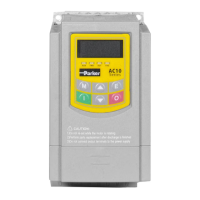
